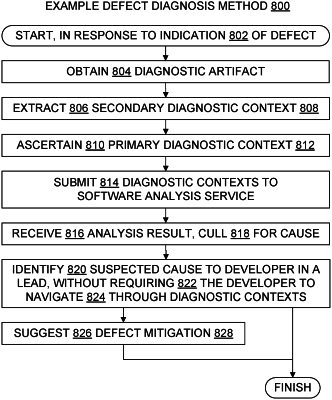| CPC G06F 11/366 (2013.01) [G06F 11/3636 (2013.01); G06F 11/3664 (2013.01); G06N 20/00 (2019.01)] | 20 Claims |

|
1. A system for identifying causes of computing functionality defects, the system comprising:
a memory;
a processor in operable communication with the memory, the processor configured to perform computing functionality defect identification steps which include (a) obtaining a diagnostic artifact associated with a computing functionality defect of a program, (b) extracting a secondary diagnostic context of an execution of the program in an execution context from the diagnostic artifact, (c) transparently ascertaining a primary diagnostic context of the program which preceded the secondary diagnostic context during the execution of the program in the execution context, (d) submitting at least a portion of diagnostic contexts of the execution in the execution context to a software analysis service, wherein the diagnostic contexts include the ascertained primary diagnostic context and the secondary diagnostic context, (e) receiving from the software analysis service an analysis result which indicates a suspected cause of the computing functionality defect, and (f) identifying the suspected cause to a software developer;
whereby the system provides the software developer with a debugging lead without requiring the software developer to navigate through the diagnostic contexts.
|